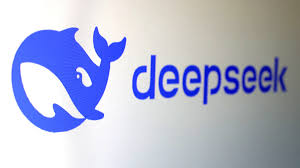By Dr. Dwi Suryanto
I. Introduction
The global AI landscape is undergoing a seismic shift. A Chinese company, Deep Seek, has emerged as a formidable competitor, dethroning OpenAI’s ChatGPT as the most downloaded app in the U.S. App Store. Beyond its technological prowess, Deep Seek has disrupted the AI industry with its cost-efficient, open-source model, achieving results that previously seemed out of reach for such a modest budget.

For business leaders and policymakers, this is a pivotal moment. It raises critical questions about innovation, competition, and strategy: How did Deep Seek achieve such a breakthrough? What does this mean for the future of AI development? And how should American companies respond to this new challenge?
In this article, we’ll explore the lessons from Deep Seek’s rise, drawing parallels to business strategies across industries and offering insights for navigating this new era of AI competition.
II. The Deep Seek Breakthrough
Deep Seek’s rapid ascent is rooted in two strategic pillars: cost efficiency and open-source accessibility. These are not just technological innovations—they represent a blueprint for disrupting established players.
Efficient Development
Deep Seek claims to have developed its AI model in just two months for less than $6 million. To put this into perspective, OpenAI reportedly spent $78 million on GPT training, while Google’s Gemini model cost around $200 million. Deep Seek’s ability to achieve comparable results on a fraction of the budget is akin to a startup outmaneuvering a corporate giant by prioritizing agility and efficiency over brute force.
Imagine a small, agile boat navigating a narrow river, while larger ships struggle to adapt. Deep Seek capitalized on this agility, focusing on streamlined processes and innovative techniques like distillation to train its model with fewer resources.
Open Source: A Game Changer
By making its model open source, Deep Seek has democratized AI development, much like how Linux revolutionized the software industry. Developers worldwide can now access, modify, and optimize the model, accelerating innovation across the board. This strategy not only builds trust but also fosters a global ecosystem of collaboration.
For business leaders, the lesson here is clear: transparency and accessibility can be powerful drivers of growth and influence, even in highly competitive markets.
III. The Role of Open Source in Deep Seek’s Success
The open-source nature of Deep Seek’s model is both a strength and a potential vulnerability.
Global Collaboration
Open source allows developers to adapt models for specific needs, bypassing limitations like censorship. For example, while Deep Seek’s original model avoids politically sensitive topics, developers outside China have customized it to align with different cultural and political norms.
Lower Barriers to Entry
By reducing the cost and complexity of AI development, open source enables smaller players to enter the market. It’s akin to how online marketplaces like Etsy have empowered individual artisans to compete with major retailers.
Strategic Vulnerability
However, open-source models also invite scrutiny and replication. As Sam Altman of OpenAI noted, “It’s easier to copy something that works than to create something entirely new.” This raises the question: can Deep Seek maintain its competitive edge as others build on its innovations?
IV. Cost vs. Quality: A Paradigm Shift in AI Development
Deep Seek’s efficiency highlights a broader trend: the shift from resource-heavy AI models to lean, cost-effective alternatives.
Implications for Hardware Vendors
Deep Seek’s model requires fewer high-end GPUs, reducing reliance on companies like Nvidia. This has already impacted Nvidia’s stock, with a $600 billion drop in market cap following Deep Seek’s rise. For industries reliant on expensive hardware, this shift underscores the need to rethink supply chain strategies and resource allocation.
A Ripple Effect Across Industries
This paradigm shift isn’t limited to AI companies. Consider the automotive industry, where electric vehicle startups like Tesla challenged legacy automakers by prioritizing efficiency over scale. Similarly, Deep Seek’s approach is inspiring companies across sectors to rethink their strategies.
Deep Seek’s rise is not just a technological disruption—it is a geopolitical challenge. The global AI race has always been more than a competition for market dominance; it’s about influence, security, and leadership in a critical technology sector.
U.S. Chip Controls and China’s Response
The U.S. government has implemented restrictions on high-powered AI chips to limit China’s technological advancement. Ironically, these restrictions may have spurred Deep Seek’s innovation. Forced to work with inferior hardware, Deep Seek focused on efficiency, proving that constraints can breed creativity.
This mirrors the experience of post-war Japan, where resource scarcity led to innovations in lean manufacturing, a philosophy that eventually disrupted global industries. Similarly, Deep Seek’s ability to “do more with less” has set a new benchmark for efficiency in AI development.
The Role of Open Source in the AI Arms Race
While open-source AI democratizes access to advanced tools, it also raises concerns about who controls these technologies. Unlike proprietary systems, open-source models can be modified by anyone—including bad actors. For example, open-source adaptations of Deep Seek’s model could bypass censorship safeguards while introducing new risks, such as misinformation or misuse.
Implications for Global Competition
Deep Seek’s rise underscores the growing influence of China in AI innovation. For American companies, this is a wake-up call. Much like the U.S. auto industry’s underestimation of Japanese automakers in the 1980s, failing to address this challenge could have long-term consequences.
VI. The Response from American AI Leaders
Deep Seek’s efficiency-first approach has highlighted weaknesses in the traditional strategies of American AI companies. The response from industry leaders will determine whether they maintain their dominance or lose ground to leaner competitors.
Learning from Deep Seek
Companies like OpenAI and Google must rethink their resource-heavy models. Instead of relying solely on massive investments in compute power, they should explore techniques like model distillation and optimization. This shift requires a mindset change: success in AI will no longer be about who spends the most but who innovates the smartest.
Collaborative Initiatives Like Stargate
The $500 billion Stargate initiative, involving companies like Microsoft, represents an effort to bolster U.S. AI capabilities. However, such initiatives must balance collaboration with competitive advantage. American firms need to foster partnerships that drive innovation while protecting proprietary technologies.
Balancing Speed with Ethics
One area where American AI companies can differentiate themselves is in ethical leadership. For example, while Deep Seek’s censorship of sensitive topics may align with Chinese regulations, it undermines trust in its global applications. U.S. companies can lead by example, demonstrating transparency and accountability in their AI systems.
VII. Lessons for Leaders: Navigating the New AI Landscape
For managers and leaders across industries, Deep Seek’s story offers valuable insights:
1. Constraints Fuel Innovation
When faced with limitations, whether they are financial, regulatory, or technological, companies can find creative solutions. Deep Seek’s efficiency-first approach is a testament to the power of working smarter, not harder.
2. Open Source as a Strategic Tool
Transparency can be a competitive advantage. By embracing open-source principles, businesses can build ecosystems that drive innovation and customer loyalty. However, leaders must also manage the risks of open access.
3. Adaptability is Key
As the AI landscape evolves, flexibility will be critical. Much like Deep Seek adapted to hardware restrictions, businesses must be prepared to pivot when faced with unexpected challenges.
4. Think Beyond Cost
While efficiency is essential, leaders must consider long-term implications, such as ethical concerns and geopolitical risks. Balancing cost savings with sustainability and reputation management will be vital.
VIII. Conclusion
Deep Seek’s rise is a wake-up call for the global AI industry. It challenges traditional notions of innovation, proving that efficiency and accessibility can disrupt even the most entrenched players. For American companies, this is not just a moment of reckoning—it’s an opportunity to adapt and lead.
The lesson for leaders is clear: success in AI and beyond will depend on the ability to balance innovation with efficiency, ethics, and adaptability. Those who embrace this approach will not only survive the shifting landscape but thrive in it.
As the AI race continues, the stakes have never been higher. For businesses, governments, and individuals alike, the question is not just how to keep up with the competition, but how to shape the future of technology responsibly and sustainably.
About the Author: Dr. Dwi Suryanto
Dr. Dwi Suryanto is a leadership and management expert with a keen focus on technological innovation. With extensive experience in AI, he bridges the gap between management principles and emerging technologies, helping businesses navigate the complexities of digital transformation.

